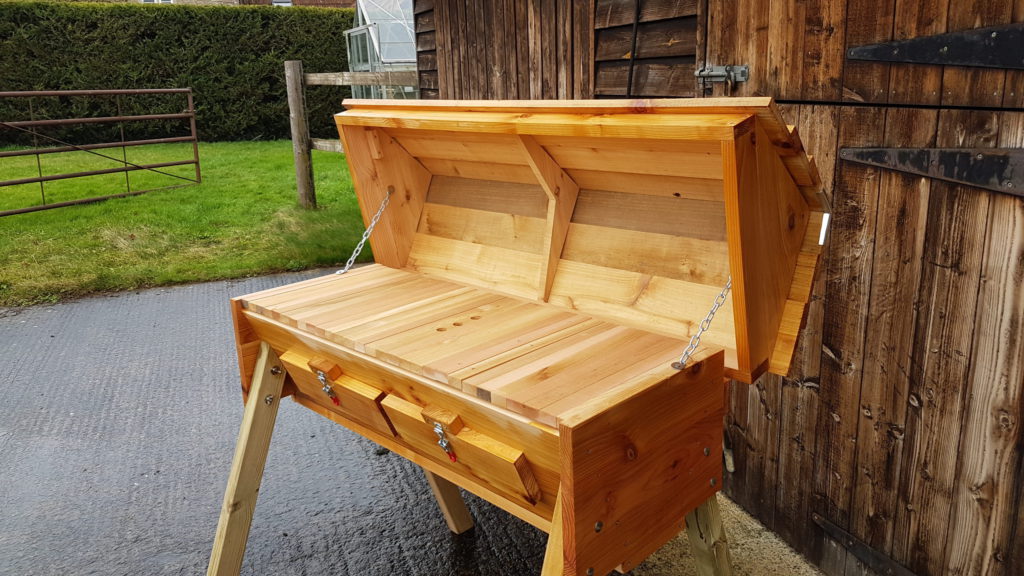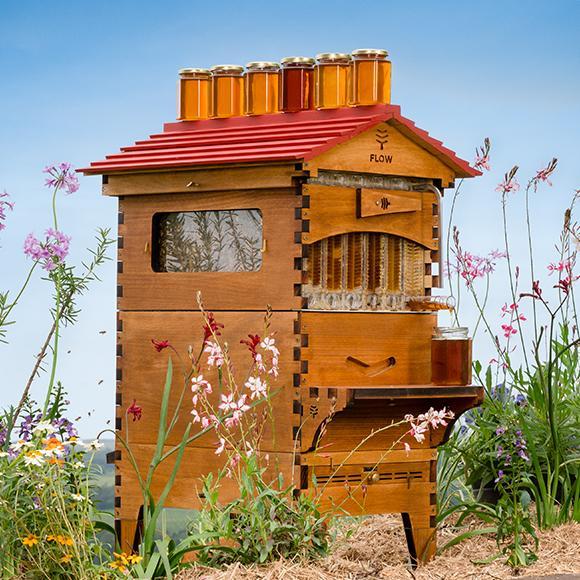Langstroth
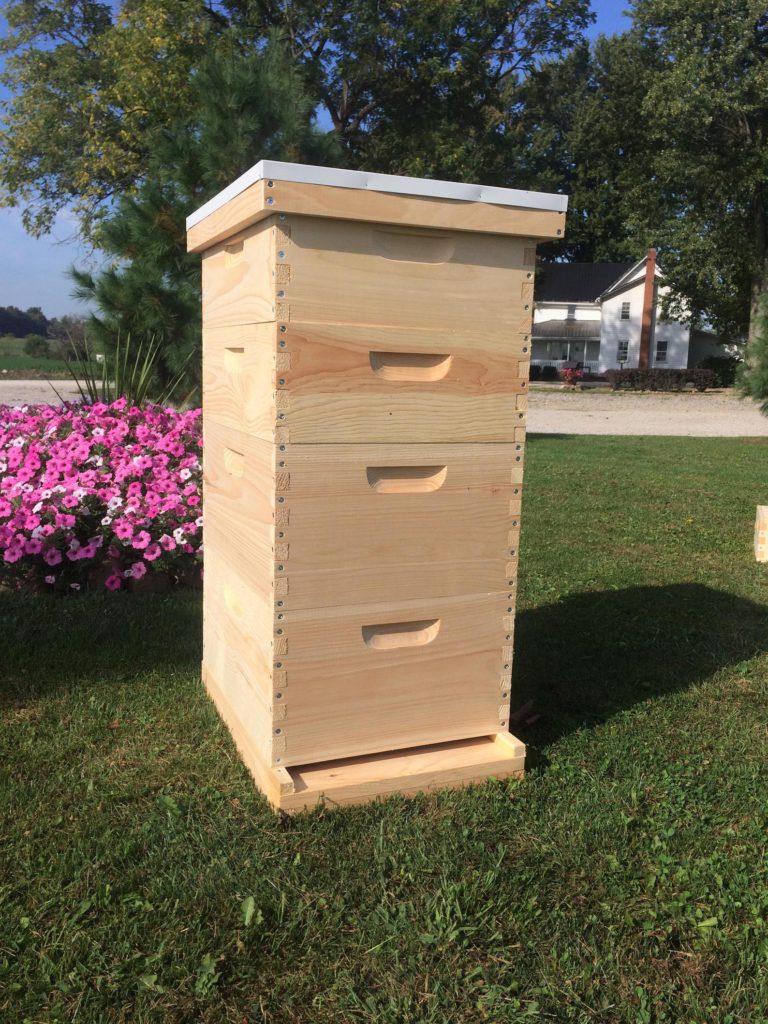
A classic-style hive, often referred to as a Langstroth hive, is the most widely used beehive design in modern beekeeping. It features stacked rectangular boxes with removable wooden frames, allowing beekeepers to easily inspect the colony, manage brood, and harvest honey without disturbing the bees too much. This modular design promotes healthy hive management and expansion as the colony grows. Durable, practical, and scalable, the Langstroth hive has become the standard for both hobbyist and commercial beekeepers worldwide.
This is the most popular hive in the US, but much of this has to do with the fact that it’s the easiest to transport in bulk on a tractor trailor (for commercial pollination beekeepers).
Typically deployed in 10 frames of 8-frame wide configurations, the 8 frame being lighter to lift. The box shape is rectangular. Finding boxes and frames for it is quite easy.
New boxes are typically added on top of the hive by simply removing the roof, adding the box, and placing the roof back into place.
Langstroth - Apimaye
New innovation, a non-wooden hive! This hive is built to last for many years.
Sophisticated, Good looking, and User friendly.
Available in both 10 frame and 7 frame configurations. WIth an insulation value close to 6.93, which is over 6 times better insulation than similarly sized pine wood hives. Best for extreme heat and cold climates.
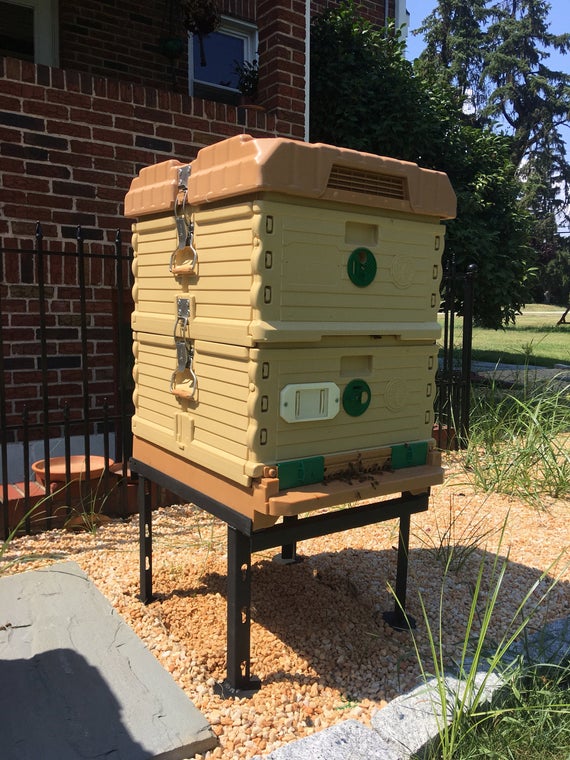
Warre
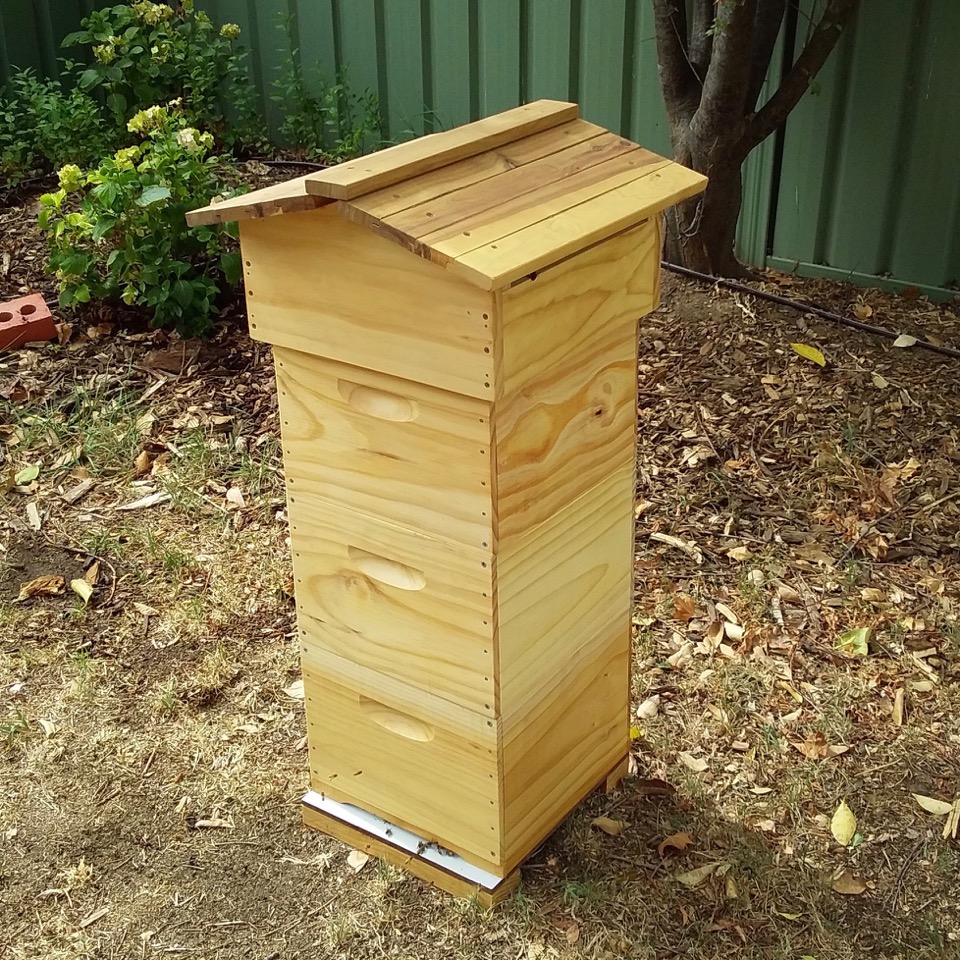
One of the cutest hives around, the Warre hive is a aesthetic gardener’s favorite.
The primary distinction is that the boxes are square, being equal length and width. In addition, Warre management typically adds new boxes to the bottom of the hive, allowing the bees to build comb downward.
In addition, many beekeepers leverage ‘top bars’ rather than frames. Top bars are slightly more difficult to inspect as you must cut the wax from the side of the box in order to remove the comb.
Log
Log hive management is typically more of an art than a business.
Benefits of log hives is that it’s the closest to a natural environment for the bees; and bees in log hives tend to have less pests and be stronger hives.
Drawbacks is that they are harder to manage, and you must often build them yourself.
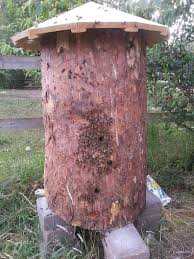
Horizontal - Layens
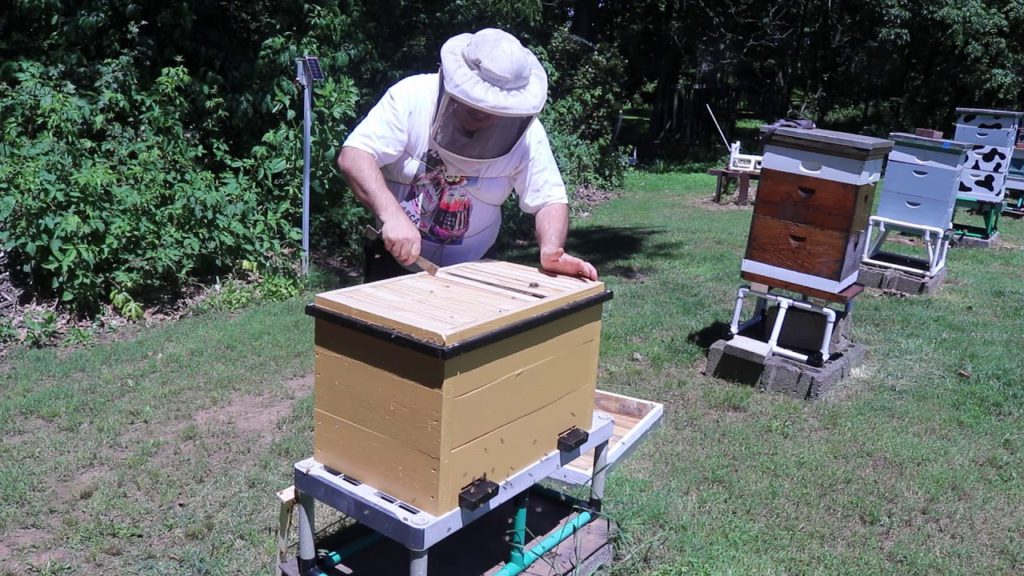
Used predominantly in Spain, Portugal, and also by hobbyists in the US.
The two benefits of the Layens hive is that there is no heavy lifting for the beekeeper; and the height of the box is greater than that of the Langstroth and Warre, allowing for a longer uninterrupted comb for the bees to navigate up during winter.
Layens hives typically use a full Layens frame, rather than a top bar, for supporting the comb.
Horizontal - Kenyen Top Bar
Additional benefits of Horizontal hives is that it’s the simplest to “split” the hive into 2 separate hives. This can be done simply by placing a separating board, called a “follower board”, in the middle of the bars.
Also, this hive can store equipment directly in the storage area above the hive, clearing room in the beekeepers garage; with no need for extra boxes.
The triangular shape of the box follows more closely to the bees natural tendency to lay eggs in a football shape on the comb.
Flow
The latest innovation to the beekeeping community, the flow hive.
No need to open the hive, a simple twist of a nob causes a the plastic frame foundation to shift, breaking the comb and causes the honey to flow out a spout on the hive.
Sizes available to fit both an 8 or 10 frame Langstroth box, flow frames are wider to support the mechanism, allowing for a total of 7 frames.
Nuc
A nucleus colony, commonly called a “nuc”, is a small, fully functioning honey bee colony housed in a compact five-frame box. Each nuc contains a laying queen, a healthy population of worker bees, brood in various stages (eggs, larvae, and pupae), and essential food stores like honey and pollen. When transferred to a standard hive and properly cared for, a nuc is designed to grow into a full-sized, productive colony over the course of the season.
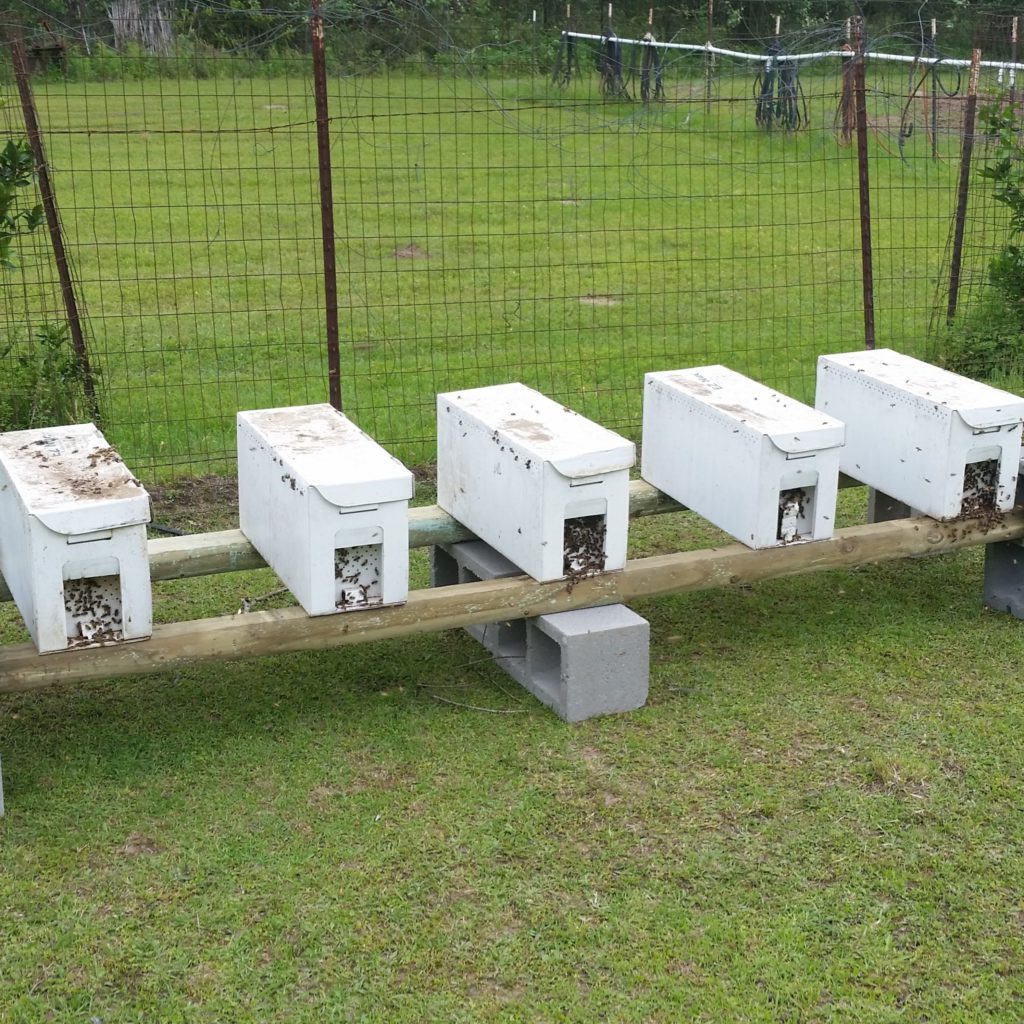
Custom
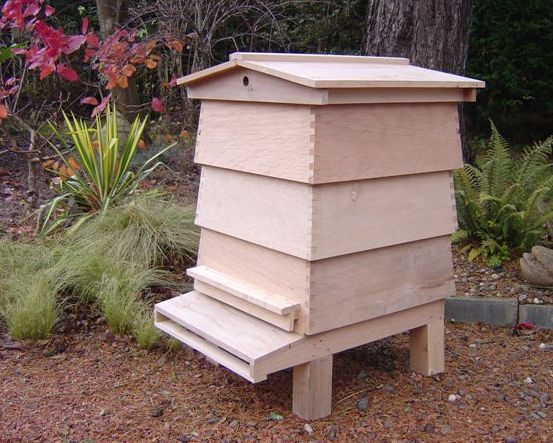
Lorem ipsum dolor sit amet, consectetur adipiscing elit. Ut elit tellus, luctus nec ullamcorper mattis, pulvinar dapibus leo.
Observation
An observation hive is a specially designed beehive with clear sides, usually made of glass or acrylic, that allows people to watch the inner workings of a honey bee colony without disturbing the bees. It provides a fascinating, up-close look at hive activity, including brood development, honey storage, and the queen laying eggs. Observation hives are often used for education, outreach, and research, making them a valuable tool for schools, nature centers, and curious beekeepers alike.
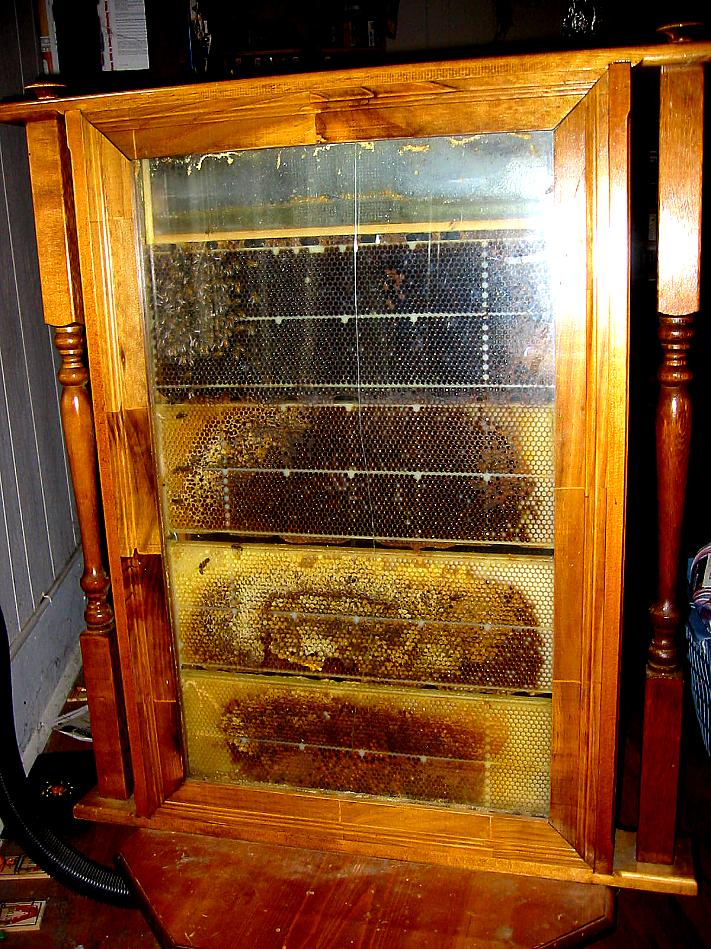
Skep
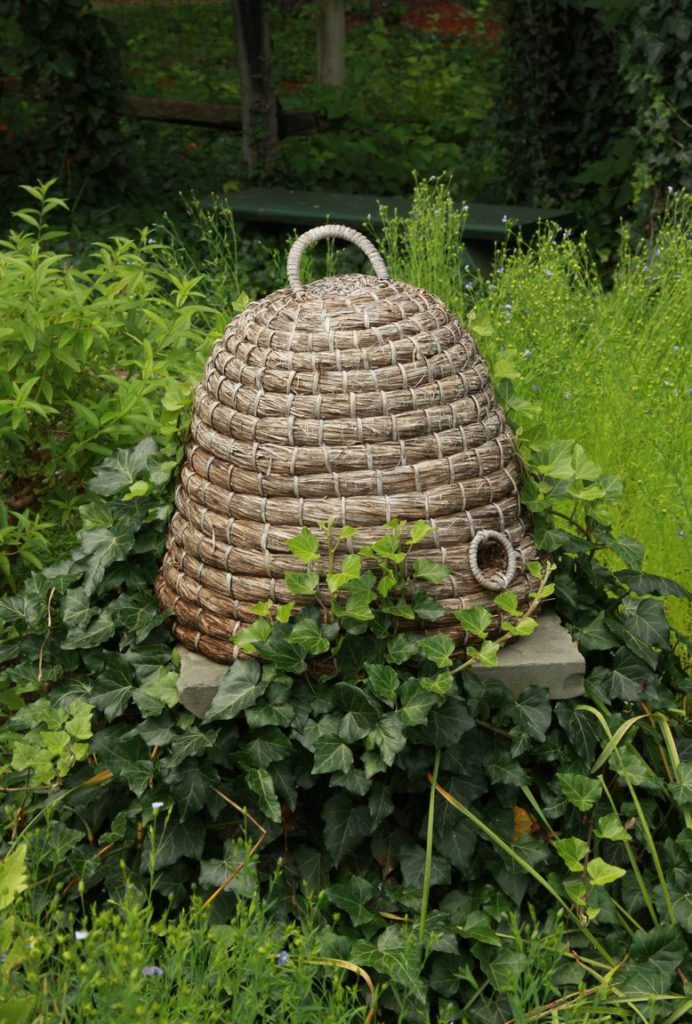
A skep hive is a traditional beehive made from coiled straw or wicker, shaped like an upside-down basket. Used for centuries before the invention of modern movable-frame hives, skeps were prized for their simplicity and ease of construction. However, because they lack removable frames, inspecting or harvesting honey often required destroying the hive, making them less practical by today’s standards. While no longer commonly used for active beekeeping, skeps remain iconic symbols of beekeeping history and are often seen in museums, gardens, and decorative displays.

